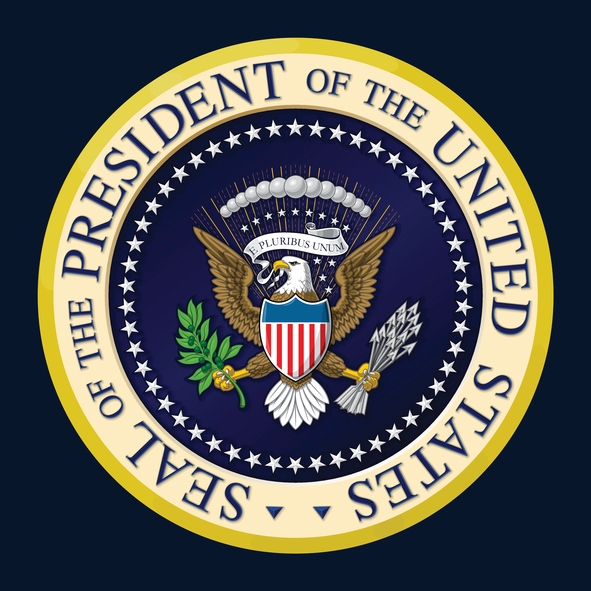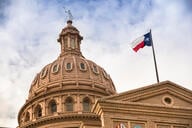You have /5 articles left.
Sign up for a free account or log in.

iStock/nazlisart
As best I can tell from my episodic exposure to recent writings on pedagogy, I do everything wrong in my upper-level undergraduate course on the American presidency.
I mostly lecture, even though my class is capped at 20 students. I assign my own books. I organize the course chronologically rather than topically, more like a historian (at least on paper) than a political scientist. My syllabus is just four pages long, bereft of nearly all the “terms and conditions” language favored by administrators.
I am prepared to change any and all of those things if ever I find that my approach no longer connects with students, but the truth is my course evaluations are through the roof. Go figure.
Let me begin with the organization of the course, which starts with the Constitutional Convention, lingers there for a while, and then proceeds through units such as George Washington and John Adams, Thomas Jefferson through John Quincy Adams, Abraham Lincoln, Teddy Roosevelt and William Howard Taft, and so on up through Barack Obama and now Donald Trump. Why do it that way rather than by topic (president and parties, president and Congress, president and foreign policy, and so on), which is how most people do it -- and how I used to?
Two reasons. One is that most political science majors who study American politics are taught a little about the founding and a lot about the post-New Deal era but not very much about the century and a half in between. In teaching against the grain, I like to think I’m helping to close this gap. I want students to understand how the presidency has become what it is, and you can’t accomplish that if you do the equivalent of jumping from single-celled animals to primates without tracing the steps in between.
The other reason is that although the course is chronological, it’s not rigidly so. Historians rightly study the past on its own terms. As a political scientist, I’m more interested in understanding the presidency by tracing its contemporary features -- including those that will constrain even the most unconventional president in history -- to their origins, some in the Constitution, some in later years. Washington and Jefferson provide apt occasions for exploring how the president’s dual roles as head of state and head of government, respectively, first were activated. Andrew Jackson offers an opportunity to discuss the growing democratization of the presidential nominating process from his time to the present. The 1920s, when radio became a transformative mass medium, are the jumping-off point for considering how new media emerge, diffuse among the population and pose fresh challenges and opportunities for presidential leadership.
Three of my books -- The American Presidency: Origins and Development (with Sid Milkis), The Evolving Presidency, and Debating the Presidency (with Rich Ellis) -- constitute the bulk of the assigned reading. Really? Well, yes -- and here’s why. All three books were born of my experience teaching the presidency and wishing there were works like them. Having developed the books for the course (and seen them catch on in multiple syllabi around the country), why wouldn’t I assign them in my own class? Incidentally, I also donate the royalties I receive from my students’ purchases of new copies to a worthy charitable cause of their own choosing. I want them to read the books, but I don’t want to make money off them. So far, students have registered no complaints, even in the anonymous end-of-semester course evaluations.
On to the lecture-based format of the class. I don’t take this approach out of any lack of appreciation of the value of discussion. In fact, I also teach in Rhodes College’s fabled great books-style program, which is entirely discussion based. Even in my presidency course, every session begins with my first inviting questions or comments inspired by the day’s reading assignments and then with students’ suggestions of politics-related news stories in The New York Times (their other continuing assigned reading) worth discussing, especially if an article connects with topics we’ve been covering in class. (For example, a sudden vacancy on the Supreme Court or the presidential election -- there’s always something.)
Every student also participates in at least one formal debate as part of a two-person team based on a chapter in Debating the Presidency, each of which consists of a pair of opposed essays on some important aspect of the office. (Report from the trenches: whatever their candidate and ideological preferences, students are incredibly conservative when it comes to the constitutional design of the presidency.) And, of course, the floor is open to any student who raises a hand at any time.
That said, usually it’s me talking -- partly because I seem to be good at it, and partly because I know a lot about the American presidency and they don’t. That’s why I always liked well-crafted lectures when I was a student and still treasure my class notes. If I found in the course evaluations that what specialists in pedagogy say about this generation is true -- namely, that they can’t stand being asked to pay attention for more than a few minutes -- then I’d changed my style. That hasn’t happened yet, even in my 75-minute classes. Maybe our assumptions about them are wrong. After all, the same generation that scrolls through Facebook also binge-watches entire 13-episode seasons of House of Cards.
A few concluding words about graded assignments. I give several quizzes during the semester rather than a midterm. In doing so, I create multiple occasions in which students have to review and in some cases catch up with recent class notes and reading assignments.
The final exam is a modified take-home: they get the questions on the last day of class and can choose when to write their exam. But when they do, it’s closed-book and they have a self-enforced 90 minutes to finish. (Rhodes has a very strong honor code, which allows me to trust them to be their own timekeepers.) The advantage is that each student has all the time he or she needs to study that a take-home exam allows but, when it comes to the actual writing, faces the sort of common, finite time limit characteristic of in-class exams. This frees them from the fear that they have to write for hours or else risk coming up short of their imagined peers.
As for the paper, each student takes a side in one of the debates from Debating the Presidency that we do not do in class, giving respectful attention to the best arguments for the opposing position. Early in the semester, each submits a one-paragraph statement describing which topic he or she has chosen and why, and then about a month later turns in a two-page progress report and bibliography.
Only the final paper is graded, but the earlier stages of the assignment give me a way of getting any students who may be straying off topic back on the road to a successful paper. And, as is the case for most writing assignments they will have for the rest of their lives, I require that they keep their essays within a set length: 1,300 to 1,600 words. This pinches them, especially at the longer end of the range. That’s intentional. No matter where their careers take them, I explain, no one will ever ask them to write a longer memo.




